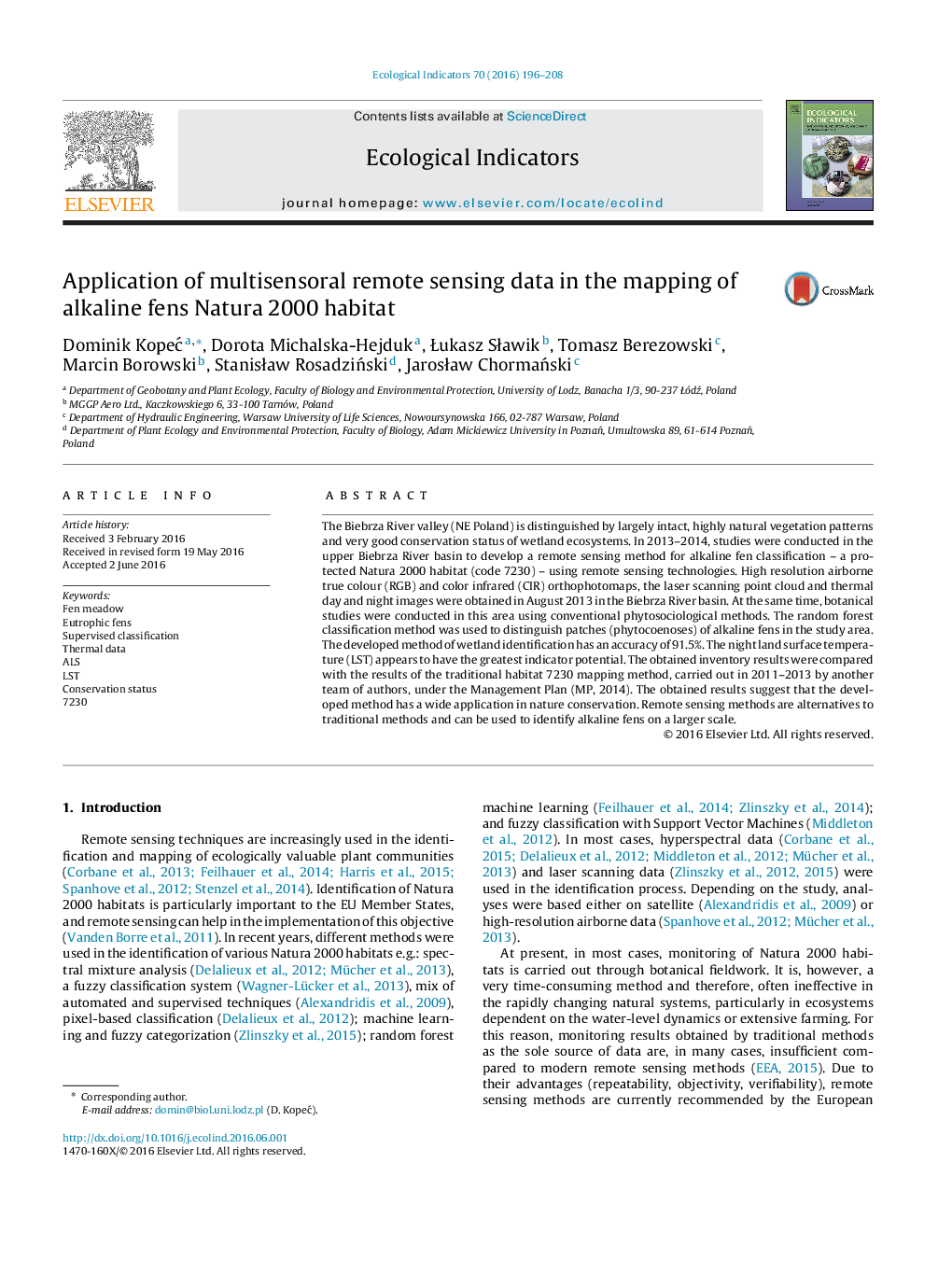| Article ID | Journal | Published Year | Pages | File Type |
|---|---|---|---|---|
| 6293079 | Ecological Indicators | 2016 | 13 Pages |
Abstract
The Biebrza River valley (NE Poland) is distinguished by largely intact, highly natural vegetation patterns and very good conservation status of wetland ecosystems. In 2013â¿¿2014, studies were conducted in the upper Biebrza River basin to develop a remote sensing method for alkaline fen classification â¿¿ a protected Natura 2000 habitat (code 7230) â¿¿ using remote sensing technologies. High resolution airborne true colour (RGB) and color infrared (CIR) orthophotomaps, the laser scanning point cloud and thermal day and night images were obtained in August 2013 in the Biebrza River basin. At the same time, botanical studies were conducted in this area using conventional phytosociological methods. The random forest classification method was used to distinguish patches (phytocoenoses) of alkaline fens in the study area. The developed method of wetland identification has an accuracy of 91.5%. The night land surface temperature (LST) appears to have the greatest indicator potential. The obtained inventory results were compared with the results of the traditional habitat 7230 mapping method, carried out in 2011â¿¿2013 by another team of authors, under the Management Plan (MP, 2014). The obtained results suggest that the developed method has a wide application in nature conservation. Remote sensing methods are alternatives to traditional methods and can be used to identify alkaline fens on a larger scale.
Related Topics
Life Sciences
Agricultural and Biological Sciences
Ecology, Evolution, Behavior and Systematics
Authors
Dominik KopeĿ, Dorota Michalska-Hejduk, ſukasz Sſawik, Tomasz Berezowski, Marcin Borowski, Stanisſaw Rosadziſski, Jarosſaw Chormaſski,
